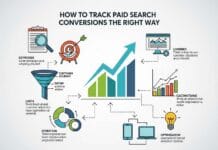The Balanced Scorecard (BSC) has become an embraced tool for strategic performance management in organizations spanning sectors. As companies continually strive to reach their objectives, tech expert John Kindrick emphasizes that technology plays a big role in streamlining the BSC process. In this article, we will delve into the trends in automating the scorecard, exploring how emerging technologies are reshaping this realm.
1. Utilization of Cloud-Based Solutions:
A significant upcoming trend in balanced scorecard automation involves leveraging cloud-based solutions. Organizations now have the ability to securely store their BSC data on cloud platforms, eliminating the need for storage and reducing infrastructure expenses. With access from any location at any time, cloud-based solutions facilitate real-time collaboration among team members, enhancing communication and optimizing decision-making processes.
2. Incorporation of Artificial Intelligence (AI):
Advancements in artificial intelligence (AI) have propelled automation forward at a pace. In the future, AI algorithms can enhance automated scorecards by analyzing datasets, recognizing patterns and relationships, and offering valuable insights for decision-making purposes. By removing data management tasks, integrating AI ensures heightened precision and efficiency in overseeing the scorecard procedures.
3. Predictive Analysis:
One emerging trend in automated scorecards is predictive analysis. Using data and AI algorithms, predictive analysis can forecast business outcomes such as sales revenue or customer satisfaction levels with a high degree of accuracy. This function allows companies to proactively identify risks and opportunities, enabling them to make informed decisions to achieve their strategic objectives.
4. Data Visualization Tools:
Communication of key performance indicators (KPIs) is essential for the successful implementation of BSC frameworks. To meet this need, data visualization tools are becoming increasingly important in automated scorecards. These tools transform data sets into appealing charts, graphs, and dashboards that are easily understood by stakeholders at different organizational levels. This visual representation enhances comprehension and facilitates prompt decision-making based on the presented data.
5. Mobile Applications:
Given the growth in mobile device usage in recent years, it comes as no surprise that mobile applications are a future trend in balanced scorecard automation. These apps offer access to BSC information anytime, anywhere, ensuring that decision-makers can stay informed while on the move. Through real-time monitoring and alerts, mobile applications empower users to make data-driven decisions, thereby enhancing the effectiveness of performance management.
6. Gamification:
The concept of gamification involves applying game elements in gaming scenarios. When it comes to scorecards, integrating gamification can boost employee engagement and motivation to achieve objectives. By including features like point systems, leaderboards, rewards, and challenges in the automated BSC process, organizations create an environment that encourages accountability among employees.
7. Integration of Robotic Process Automation (RPA):
Robotic Process Automation (RPA) is gaining traction across industries for streamlining rule-based tasks. When combined with automated scorecards, RPA can handle data collection and aggregation tasks, reducing labor and minimizing errors. This automation frees up employees to focus on analyzing data and extracting insights for decision-making.
8. Continuous Monitoring and Alert Systems:
Continuous monitoring and alert systems play a role in automated balanced scorecards to keep organizations aligned with their goals. These systems send real-time notifications when key performance indicators deviate from benchmarks or show trends. Through automated alerts, decision-makers can swiftly address issues and implement measures to steer performance in the right direction.
9. Integration with Big Data Analytics:
As the volume of data generated by organizations continues to grow, the integration of big data analytics into balanced scorecard automation is becoming increasingly important. By harnessing big data, organizations can analyze vast datasets to uncover hidden trends, correlations, and insights that traditional data analysis methods might miss. This integration allows for more comprehensive and accurate performance measurement, enabling organizations to make data-driven decisions that align with their strategic goals.
10. New Tools Changing the Way Teams Use Balanced Scorecard:
Balanced scorecards are getting easier to manage thanks to new tech. One major shift is moving to cloud tools. Teams can now check and update their scorecards from anywhere, which helps people work together without delays. It also cuts storage costs and makes updates quicker. Another big change is the use of AI. With the help of smart algorithms, companies can now spot patterns and get useful tips without doing all the number crunching by hand.
Prediction tools are also growing. These systems can suggest what might happen next, like drops in sales or changes in customer interest, before it happens. This gives teams time to act, not just react. Plus, new design tools now show results as simple graphs and dashboards, so people at all levels can understand the numbers right away.
Companies like Admiral Studios are already building smart solutions in this sphere. Their AI automation services help clients connect performance tools with easy-to-read visuals and alerts. This AI automation agency builds systems that work in the background, helping teams stay on track without adding more tasks to their day.
Wrapping Up
The automation of scorecards is progressing swiftly, thanks to advancements. Cloud-based tools facilitate teamwork and streamlined data storage, while the incorporation of AI improves precision and efficiency. Predictive analytics provides insights for making decisions, and data visualization aids in effectively communicating key performance indicators. The availability of apps enables decision-making on the go and incorporating gamification boosts employee involvement. As organizations explore these trends in automated scorecards, they are poised to enhance their strategic performance management processes, paving the way for success in their respective fields.





